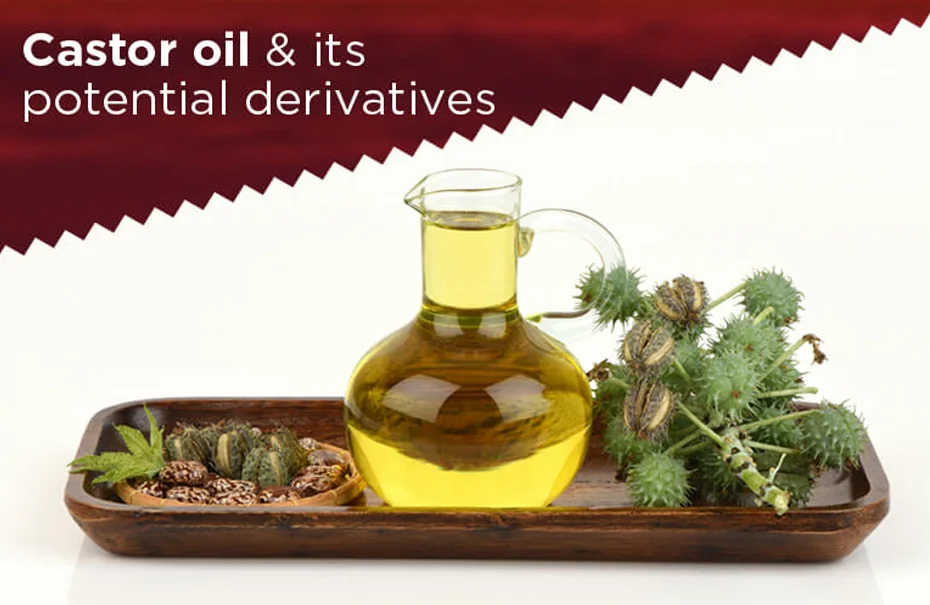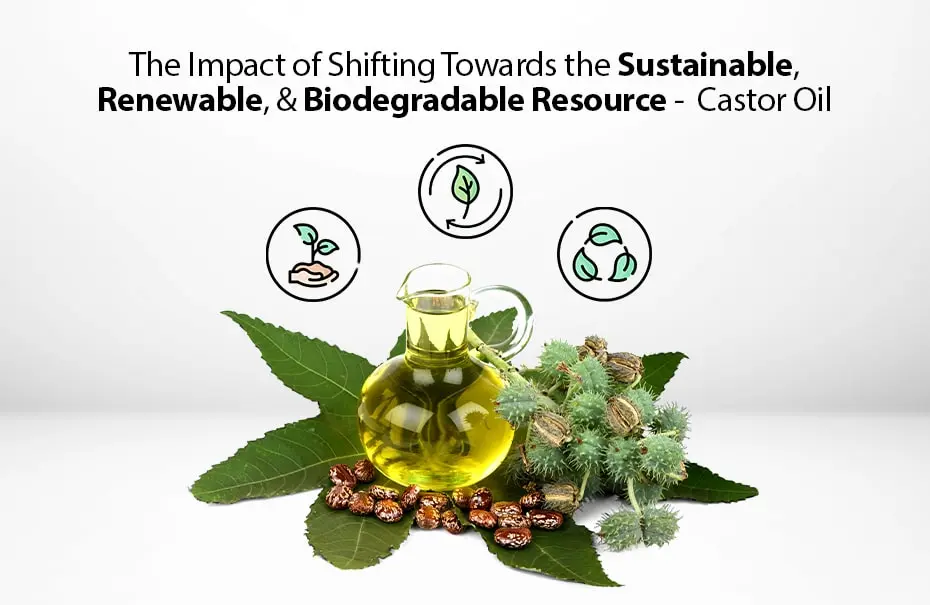How castor oil derivatives are used in textiles for dyeing of cotton fabric?

Environmentalists address the issue of replacing synthetic dyeing substances with bio-friendly ones. The use of bio-friendly products would ensure a more sustainable environment for future generations.
One such agenda is the practical usage of castor oil derivatives in dyeing and wetting cotton & linen textile. Oleochemical oils have immense potential for smart usage in umpteen industries. Several studies reveal based on parameters like acidic value, concentration, and saponification value, refined castor oils meet industry standards.
The derived iodine value clearly indicates that castor oil can be put to use in dyeing & wetting.
Turkey red oil, a derivative of pure castor oil can dye cotton fabric with vat dye.
Unveiling crucial facts about castor plant
Castor plant is very robust and grows annually. It can grow between 2 and 5 meters provided it gets adequate humidity, optimum heat & sunlight. It grows well in the regions of frost-free mild winters. There it appears like gigantic woody outgrowth. The foliage coloration may vary from dark-red metallic to black-purplish & from maroon to bronze-green. The foliage grows well if pests and insects are well taken care of. But the natural cultivation of the plant should not be encouraged owing to its poisonous seeds.
How is castor oil derived?
Castor oil has a pale amber color whose viscosity remains quite high. Of the few glycerides that claim to be pure compounds, castor-oil is 9/10 ricinoleic.
Its pale straw coloration starts turning yellowish post its refinement. Like most vegetable oils, it’s a triglyceride.
The chemical composition of a typical glycerol molecule has 3-hydroxyl group being esterified with an elongated clown fatty-acid. Its major component, a fatty acid is unsaturated hydroxylated-12 –hydroxyl – 9 octadecenoic acid. The component has a familiarity with ricinoleic acid.
The castor plant is more of a tropical species. But it may even be found in temperate zones. The toxicity of castor plants could be a major reason why the US farms cultivate them no longer.
Castor oil when treated with sulphuric acid generates Turkey red oil. This derivative of pure castor oil is put to industrial purposes.
An excellent dyeing agent
This oil is vastly used in dyeing and finishing cotton & linen. This anionic wetting agent is obtained by treating castor oil in room temperatures with sulphuric acids up to 3-4 hours.
Post this reaction period, the concentrated solution is diluted using water. It then forms two layers. The layer of oil is neutralized & decanted with caustics (roughly 1.2 to 2.4 percent of the oil-weight).
Now it’s time for re-washing to remove bits of caustics.
To follow this procedure, one would need a large open vessel fitted with water-coils. Also, one needs high-speed agitator. The acid is churned out with vigor during the reaction period. It’s done to remove the excesses that may get the oil charred. One more thing needs to be observed. Controlling the temperature by regulating water-flow is crucial. This is done by automated controls or manually.
This modification process is called sulphation.
20 grams of oil is heated at 35-degree centigrade. The completion of this reaction is done by vigorous stirring. The remnant is distilled and put aside for an hour or two. It is washed thoroughly using hot water. Thereafter, the distilled water is removed.
The ester thus formed is neutralized using sodium peroxide.
Specific gravity, an important determinant
Specific gravity plays a role for crude castor oil to become a dyeing agent. Density bottles are used to determine the density. We must make sure the bottle is devoid of impurities. The capacity of the bottle (in terms of volume) is 25 milliliters.
The bottle is filled with oil and a stopper is inserted. The volume is reweighed. Then, we substitute the oil with water post washing & drying the bottle. The mass of water is weighted again.
Now the formula of the derived specific gravity equals – the mass of the substance/ mass of equal volumes of water.
The pH value also makes for an important determinant in the procurement of castor oil products.
Expression for acidic value
The method for deriving the acidic value of castor oils was mentioned under ISO 660 (2009). Here it goes – 25 milliliters of diethyl ether were blended with equal parts of ethanol. The process needs to be performed in 250-milliliter beakers. The resultant was mixed with 10 grams of oil in the conical flask. To this, phenolphthalein was to be added.
The remnant is then titrated with KOH till the end. Consistent stirring must be ensured in the process. Now, the mixture attains a dark-pink hue.
The expression for acidic value goes as follows – (56.1XVXC)/M
- Here V stands for the vol. of potassium hydroxide
- C stands for the concentration of potassium hydroxide
- M stands for the mass of tested portion (measured in grams)
- 56.1 stands for equivalent-weight of potassium hydroxide
Deriving saponification value of castor oil
This method was mentioned under ISO 3675 (2002)
The sample was put into a conical flask and mixed with ethanolic KOH. It’s then stirred with vigor and heated gently for an hour. The reflux condenser was fitted to the flask wherein the cooled mixture was procured. Few drops of phenolphthalein were added with the cooled mix.
It’s then titrated with hydrochloric acid until the pink hue disappears.
The expression is as follows – [56.1 N (V- V1)]/M
V – Volume of the solution in the blank test
V1 – Volume of the solution to be determined
N – Normality of hydrochloric acid
M – Mass of sample
The dyeing agents used
Ferrous sulfates and their derivatives are the actual dyeing agents. Turkey-oil, procured by sulphation, hydrogen peroxide, soap powder are auxiliaries. Conventional dyeing was tested on cotton fabrics. Here, hydrous was the real reducing agent. Most industries use hydrous for the extraction of castor oil products.
The finally obtained mix was allowed to perspire at room temperatures.
Conclusion
Reviews prove that refined castor oil is a valued renewable resource. For this bio-friendly product to thrive, we must use it for its sustainable properties.
On a concluding note, it has been established that castor dyes cotton & linen and does their finishing effectively.



